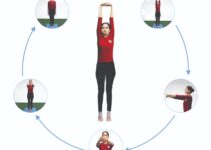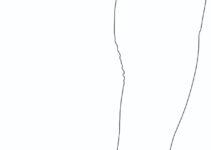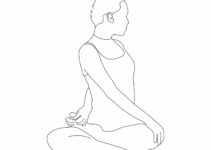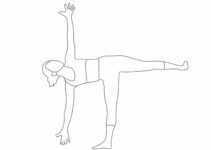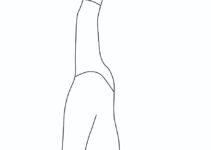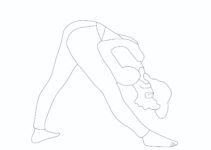What is Parvatasana?
Parvatasana is a sitting yoga posture known for flexibility, strength, stability and stamina. It comprises two words: Parvat means ‘mountain’, and asana means ‘Yoga pose’. It stretches the entire spinal region and body from the waist to the fingers. It is also called mountain pose because of its solidness and straightness. Conversely, it is one of the best photogenic yoga postures. Here, we will discuss its easy-to-understand steps, some fantastic benefits, precautions while performing the pose and the conditions wherein it shouldn’t be practised-contraindications. Parvatasana, Tadasana, and Sarvangasana make TadasanaTadasana and Sarvangasana make a perfect exercise module to be fit and healthy.

How to do Parvatasana step by step?
- Sit in Padmasana
- Inhale, raise your arms upward, stretch, and interlock your fingers before your head.
- Ensure your arms are touching your ears while stretching them upward.
- Maintain the pose as long as you can with slow breathing.
- While maintaining the pose, gaze at a single point ahead.
- Exhale, unlock your fingers and palms and bring your arms slowly down towards the respective thighs.
- This is one round. One can practice it for 2-3 rounds.
Modifications and variations
- While stretching your arms upward, one can bend the right side by touching the arms to the ears. The same thing can be repeated on the left side, too. In both cases, there shouldn’t be movement of the body below the waist.
- One can twist the spine to the right and left side, ensuring the arms’ position as mentioned above. Twisting of the spine may be done as per one’s capacity.
- Maintaining the arms position as mentioned above, one can bend backwards conveniently. Maintain as long as you can. Inhale and come to the original work.
- In all these variations, your arms should be straight and stretched and must touch the ears.
Parvatasana precautions
- Arms shouldn’t be bent at the elbows and wrists.
- Ensure that your arms are straight and stretched.
- Better to perform it by sitting on padmasana
- Ta to get maximum pose benefits, skip movement while maintaining it.
Parvatasana contraindications
It shouldn’t be performed in the following conditions.
- Spinal injury
- Frozen shoulder
- Backache
- Arthritis
- Hypertension
- Cardiac problems
- Carpal tunnel syndrome
- It should avoid wrist, elbows, hips, neck and shoulder injuries.
- Knee injury
Parvatasana benefits
- Very few people know that parvatasana can be helpful in weight loss if it is practised with proper technique. It is good to shed extra fat from the abdominal side and ton the abdominal muscles.
- It is one of the best yoga poses for a healthy spine.
- It is beneficial for treating backache.
- It makes the pelvic muscles smooth and supple and loosens the hips.
- Its practice stimulates the internal organs, improving blood circulation and efficiency.
- It is also suitable for the uterus by supporting the viscera.
- This yoga pose helps to stimulate the heart chakra, thereby regulating love, emotions and empathy.
- It is a beneficial yoga exercise for those who have asthma. It helps to expand your lung capacity.
Preparatory pose (Yoga should be done before Parvatasana)
- Padmasana
- Vajrasana
- Dandasana
- Tadasana
- Hastottanasana
Follow-up pose (Yoga should be done after Parvatasana)
- Shavasana
- Makrasana
- Shashakasana
Breathing
Inhale while raising your hands upward. Exhale while bringing your arms downward. Do inhale and exhale slowly while maintaining the pose.

